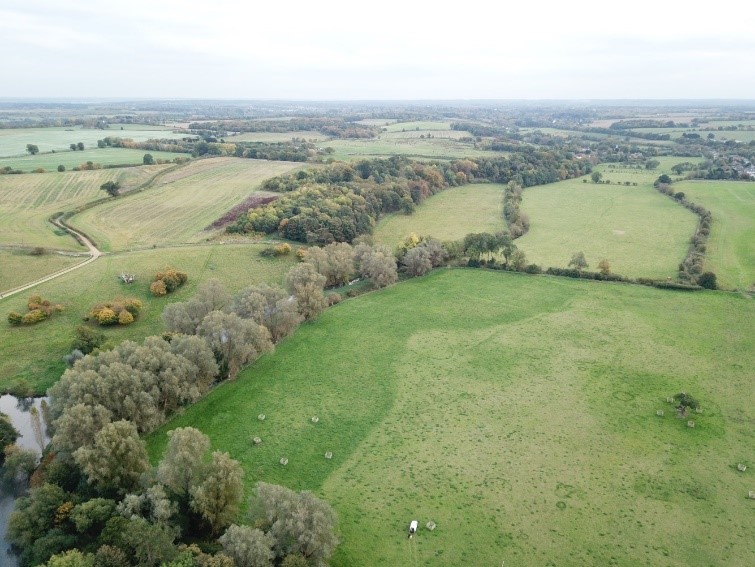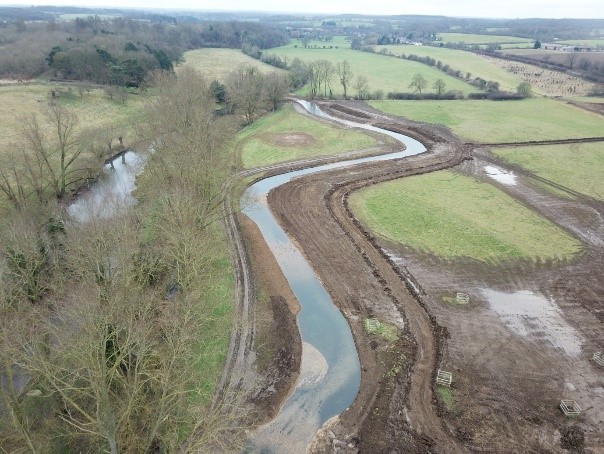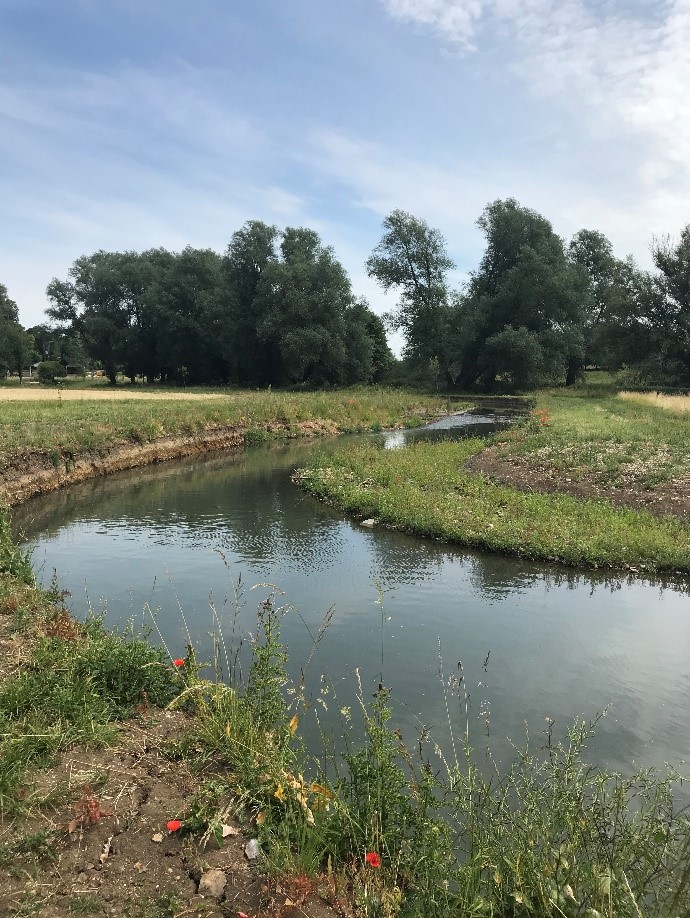We then moved onto the first phase at Woodhall Park where we bypassed a ‘horseshoe weir’ and created 400m of new river channel to help fish move up and down the river.
This work is beneficial as it allows the fishes to gain access to areas of better habitat, for spawning, feeding or seeking cover.
Steep banks were also included in the design along part of the new channel, to provide a suitable habitat for water voles should the proposed plans to re-introduce them into the River Beane catchment come together.
This work was completed in December 2017.
The original river line

The original river line is behind the row of trees on the left and the field was used for grazing. There is a weir at the downstream end which was preventing fish from swimming up the river.

The weir - no fish can get up there!
New design

This design drawing above shows the new channel and in-channel features which all provide habitats for different flora and fauna (the design is upside-down compared to pictures).

This shot was taken at the beginning of December and shows the beginning of the new channel excavation. The gravel was added to the riverbed as this is a characteristic of a chalk stream and fish spawn in the gravel.

In late December, the bund which separated the new channel from the current river was popped so that the river channel was live. Due to the heavy rainfall in the second half of winter, the ground was very wet and not suitable to be re-seeded. The grass has now come back and the site is looking much nicer.
Update

June 2018 - The berm and banks are vegetating nicely. Three Herons were also spotted on the banks suggesting fish have found their way up the new channel.